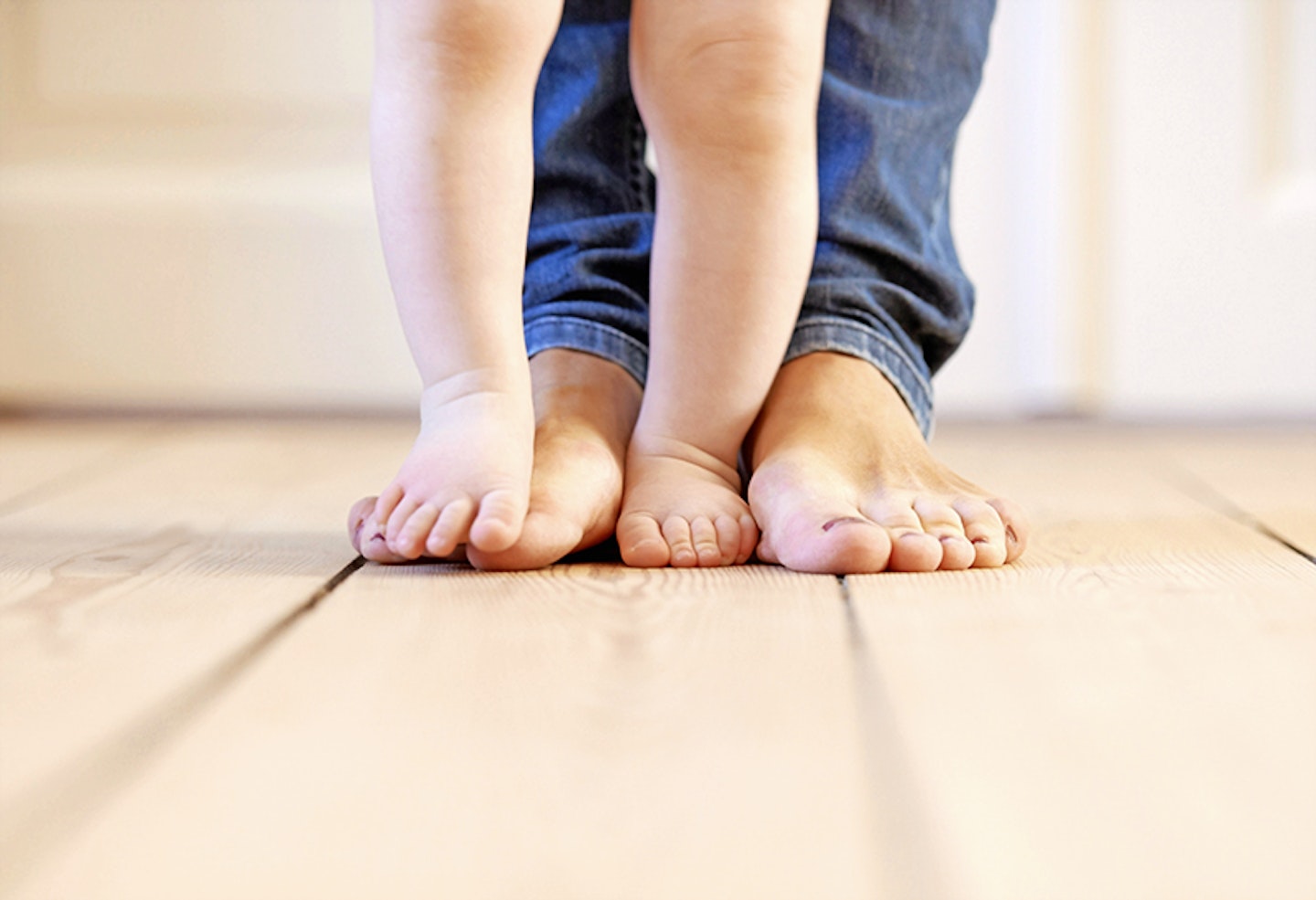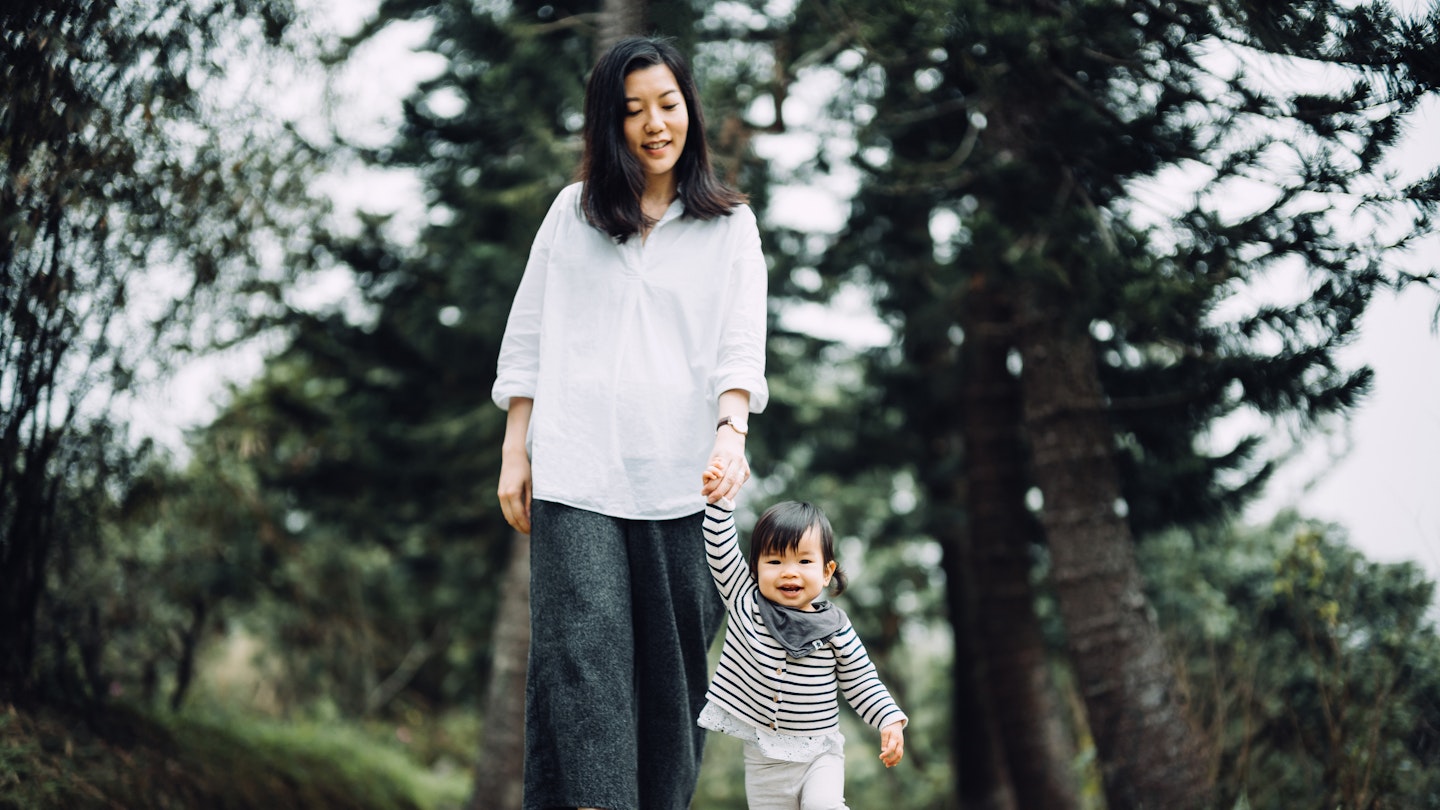From the moment you left the maternity ward you’ve been counting down the days to those exciting first milestones – the first gummy smile, the first tooth, the first words (mama obvs!). And now you’re getting closer to another biggie – the first steps (a walker can really help with this).
Walking is a huge step (pun totally intended!) in your toddler’s development, but roughly when can you look forward to seeing your little one taking their first wobbly steps? We’ve rounded up a checklist of your tot’s typical walking milestones.
Walking
Though every child is different, most will walk between eight and 18 months. If your little one isn’t walking by the time she’s 18 months, don’t panic – she’ll do it when she’s ready, but it might be worth having a chat with your GP or health visitor.
If your little one isn’t walking by the time she’s 18 months, don’t panic
{#h-}
Standing up
Most children learn to stand unaided (often before crashing back down on their bottom) by the time they’re 14 months.
The best baby and toddler reins for your wandering little one
Cruising
The transition between standing and walking, cruising is when your tot uses the sofa or a piece of furniture in reach to hold onto as she walks along. Most kids are cruising along the sofa by the time they’re a year old.

Standing on tiptoes
Most toddlers can stand on their tiptoes by the time they are two years old. And you know what that means? They have a bigger reach. Time to babyproof those higher shelves!
Kicking
Your Baby Beckham will probably be able to kick a ball by the time he hits 30 months.
Jumping
Most toddlers can jump with both feet off the ground by 30 months. Children typically jump first by lifting only one foot off of the ground, but eventually get lift off with both their twinkle toes.
Fun ways to get your toddler on the move
While you wait with baited breath for those tentative first baby steps there are a couple of simple tricks you can do to encourage your little one to get moving.
Before your toddler starts to walk he’ll need to be physically able to bear weight and have the strength in his arms and legs to pull himself up and stand. Your tot will indicate in his own time when he’s ready by holding hands and walking with you – remember your baby will only walk when he’s physically ready!
But that doesn’t mean you can’t help them along....
Remember your baby will only walk when he’s physically ready
What goes up must come down
As your baby learns to stand and cruise along the furniture, he may need some help working out how to get back down again. If he gets stuck don't just plonk him back down. Instead, show him how to bend his knees so he can sit down without toppling over, then let him have a go on his own.
Yes, you’re allowed to laugh if he does a comedy stumble. You’ve Been Framed wouldn’t exist without tumbling tots.
Stand before you can walk
Get the standing licked before encouraging the first steps.
'Try putting toys and activities on child height tables to help encourage your little one to pull himself up to get to his favourite toys,’ says Claire Burgess, early years consultant at Norland College. Once he’s got that sorted he’s more likely to get those tootsies on the move.
Get things moving
You can encourage your baby to walk by standing or kneeling in front of him, holding both his hands as you help him walk towards you. Or encourage him to push a walker or a push along toy. Choose one that is stable and has a wide base, as this is less likely to cause a topple.
How to teach your toddler to go down stairs
Fred Safety shares their tips on helping your toddler learn to go down the stairs...
-
Teach your toddler to climb up and slide down - Most children are ready to start using the stairs by 18 months of age. At this time, children can usually walk upstairs, but they don’t yet have the balance to walk down them safely. Teach and show your child how to walk up the stairs by holding a handrail and taking one step at a time. For going down the stairs, show your child how to crawl backwards on her stomach, hands and knees, feet first.
-
Let your little one practise using the bottom three steps. Show them how to hold onto the bannister while climbing up and going down.
-
Give them space to practice walking up the stairs. Always stay close and supervise just in case they lose footing and give themselves a scare.
-
Once they have mastered the three steps, let them try going all the way to the top. Repeat the rule about holding onto the rail and stay a step or two behind should they tumble. Once they have reached the top, let them come down. Always stay a couple of steps in front of them just in case.
-
Always make sure you keep the stairs in your home clear of obstructions and toys so that there is nothing to trip over.
-
It is better for little ones to practise on carpeted stairs so no slipping around.


